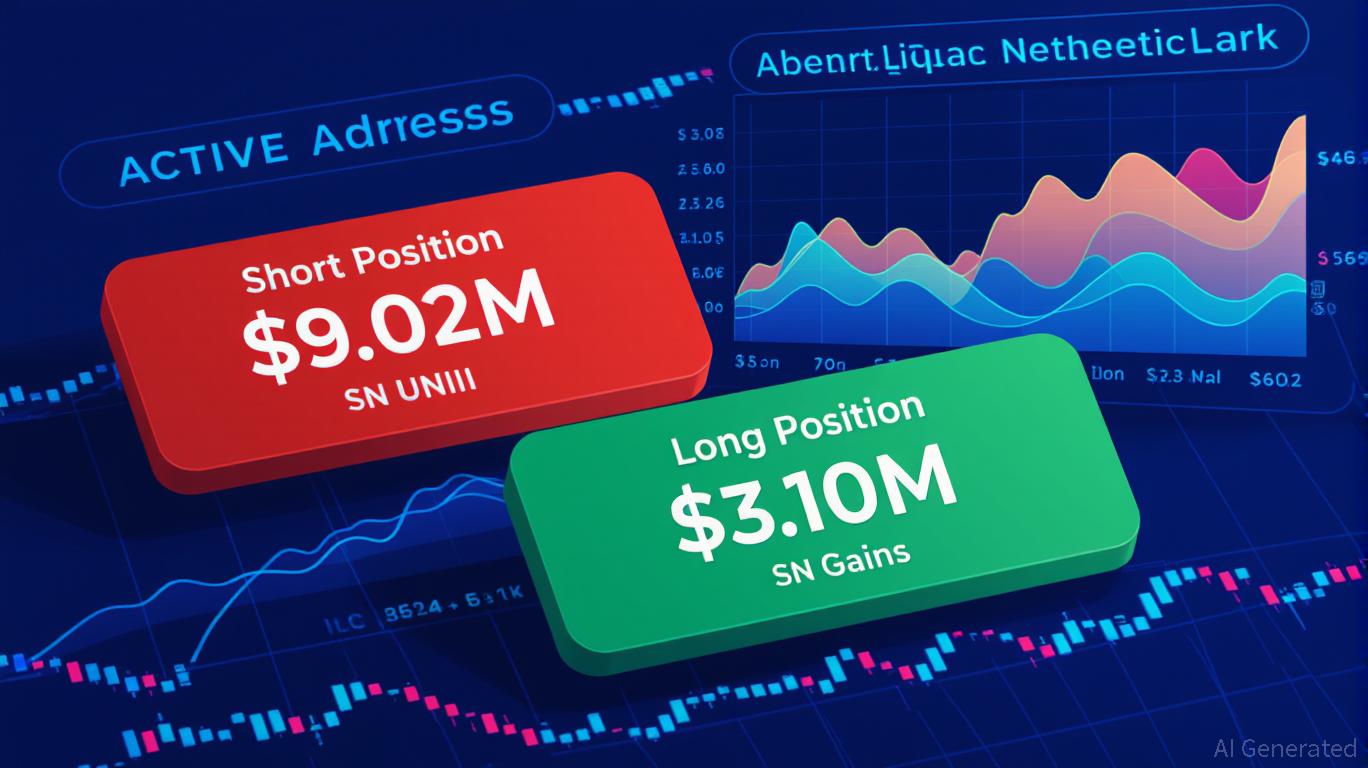AI's Growing Demand for Power Pushes the Energy Industry Into an Intense Sustainability Competition
- Energy and tech sectors collaborate to address AI's surging energy demands through sustainable computing infrastructure and efficient GPU solutions. - Devon Energy and Alliant Energy boost capital spending on grid modernization and storage, aligning with AI-driven power needs while maintaining shareholder returns. - NVIDIA advances open-source GPU efficiency via Nova driver, yet faces market volatility as AI sector grapples with financial risks and regulatory pressures. - Industry challenges include bala
The drive to create more energy-efficient computing systems is gaining momentum as technology and energy industries join forces to address the rapidly increasing needs of artificial intelligence. As AI-related tasks fuel a dramatic rise in data center power usage, businesses are increasingly turning to sustainable methods to support high-performance GPUs. This evolution is influencing where investments are made, shaping regulatory agendas, and spurring new technological developments, as all parties seek to balance the growing demand for computing power with environmental responsibilities.
Energy companies are taking on a key role in this transformation.
The commitment to sustainability is also clear in Atmos Energy Corporation’s 2025 fiscal performance, which included $3.6 billion in capital spending, with 87% dedicated to enhancing safety and reliability, according to a

Despite these technological strides, obstacles remain. C3.ai (AI), a provider of enterprise AI software, is facing financial difficulties following a leadership change due to the founder’s health and a 54% drop in its stock price in 2025, as detailed in a
The convergence of the energy and AI sectors is further complicated by regulatory challenges.
As the landscape changes, partnerships between energy suppliers and technology leaders will become increasingly important. Alliant Energy’s recent deals with Google and other major customers to enhance electric services, as described in a GuruFocus report, along with NVIDIA’s progress in open-source GPU technology, as reported by Phoronix, indicate a coordinated effort to achieve both high performance and sustainability. With global data center power consumption expected to climb significantly, building energy-efficient GPU capacity is becoming not only a technological necessity but also a financial and environmental priority.
Disclaimer: The content of this article solely reflects the author's opinion and does not represent the platform in any capacity. This article is not intended to serve as a reference for making investment decisions.
You may also like
Quantum Computing Could Break Bitcoin Security — Here’s What You Can Do Now to Secure Your BTC

Hyperliquid (HYPE) Price Rally: Increased On-Chain Engagement and Institutional Interest Drive Expansion Prospects
- Hyperliquid's HYPE token surged 32% driven by whale trading and institutional adoption via HIP-3 framework. - Whale activity shows $9M UNI short vs. $3.1M long positions, highlighting platform's speculative role in volatile assets. - Institutional partnerships with RedStone and Felix, plus 21Shares' ETF application, signal growing market confidence. - TVL reached $5B with 73% decentralized trading share, but regulatory gaps and leadership changes pose sustainability risks.

The Growing Fascination with Hyperliquid: Is This the Next Evolution in Cryptocurrency Trading?
- Hyperliquid dominates decentralized trading in 2025 with $303B Q3 volume, 62% perpetual DEX open interest, and $5B TVL growth. - Ecosystem expansion includes HyperEVM (100+ protocols, $2B TVL) and USDH stablecoin (backed by BlackRock , $2.2M trading volume). - Institutional adoption grows via 21Shares' ETF application, but risks include regulatory scrutiny, 16-validator security vulnerabilities, and HYPE token volatility. - Competitors like Aster (near-$30B daily volume) challenge Hyperliquid's dominance

YFI drops 2.95% over 24 hours as market experiences turbulence
- Yearn.finance (YFI) fell 2.95% in 24 hours to $4,851 amid crypto market volatility. - Despite short-term gains (0.96% weekly, 2.52% monthly), YFI has dropped 39.62% over one year. - Traders analyze technical indicators and on-chain data to assess if the dip is a correction or deeper trend. - A backtest evaluates moving averages and volume signals to test strategies for mitigating losses during volatility.